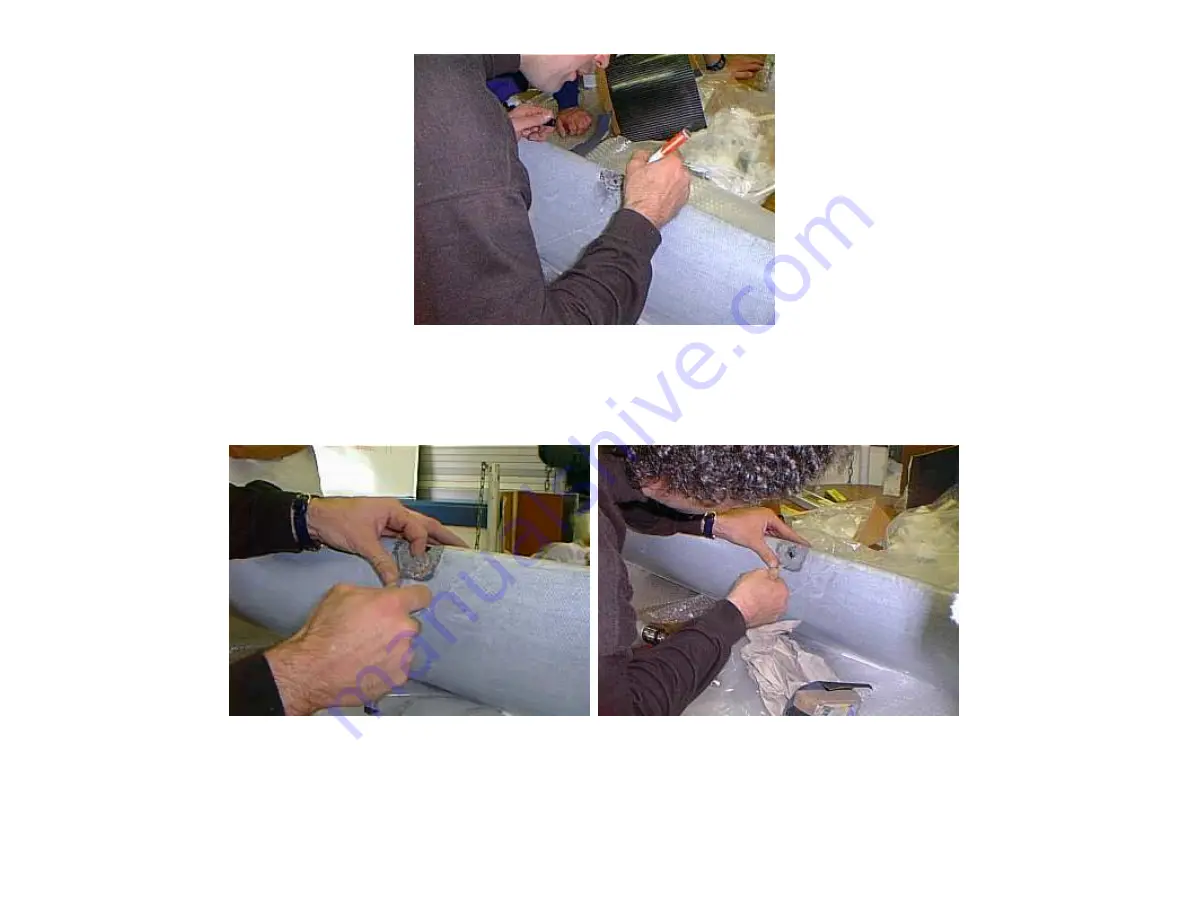
6 of 20
Sand this newly marked area down to the honeycomb, and scrap away the honeycomb down to the lower level of carbon fiber, keeping the sanding
and the scrapping at a 45-degree angle to the surface. If you have to go down this far, you have now exposed the interior carbon fiber layer to an
extent of inch on all sides outside the original damage to the exterior carbon fiber layer. You can remove any of the exterior carbon fiber layer that
has been damaged.
Lay a sheet of very thin clear plastic (like from a plastic bag) over the newly sanded, damaged area, and using a felt pen, draw a circle equal to the
size of the most interior clear area on the interior carbon fiber layer.
You are going to outline the size of additional patches in a similar manner on additional pieces of thin plastic. The difference between these
patches, and the one that you will place on the interior carbon fiber, if you go down this deep, is that they will be 1/2 inch wider on each side then
the hole that they are covering.


































